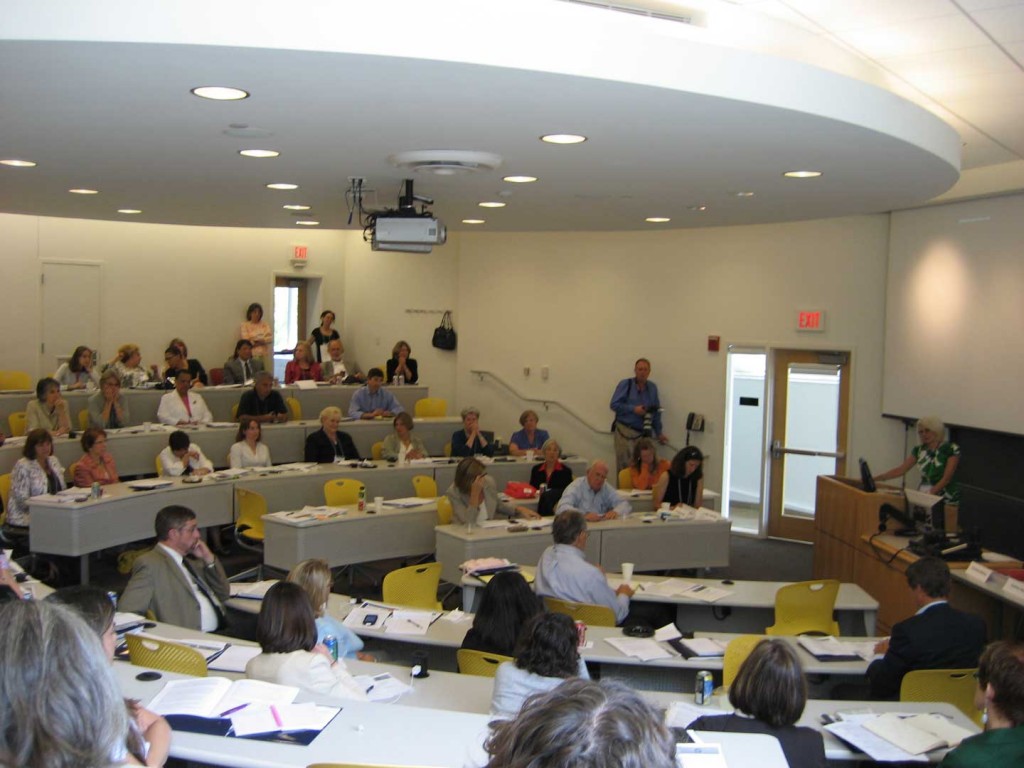One of the knocks on foundation funders is that while we counsel our grantees to work together and to overcome the parochial in favor of mission, we ourselves do poorly at collaboration with others, especially other funders.
Collaboration is not easy for anyone, not-for-profit or for-profit, as the booming business literature on successful partnerships indicates. Foundations experience many of the same barriers as anyone else: pride, inflexible processes, and the “not invented here” dismissal of outside ideas.
At the Hartford Foundation we try very hard to overcome these barriers. Of course we are very proud when other funders buy in with us on projects we have helped start. But to be good partners, we work very hard with our co-funders and our grantees to share credit, modify administrative rules, and shape co-funded projects to best fit the interests of new supporters.
However, a sterner test is the reverse, those times when we have bought into work originally sponsored by another funder. I am particularly proud of our grants to: Visiting Nurse Service of New York (VNSNY) for the CHAMP home-care program, buying in on what Atlantic Philanthropies had started; the Center to Advance Palliative Care (CAPC), buying in on the Robert Wood Johnson Foundation’s investment; and the Study of the Geriatric Health Care Workforce, started by the Donald W. Reynolds Foundation. Even our initial forays into geriatric depression treatment, evolving into IMPACT, came as a result of our adding funds to the late 1990s MacArthur Foundation depression network for a trial of treatment of minor depression.
As I’ve thought about these efforts, I’ve come to two new-to-me conclusions. First, another barrier to collaboration is mission focus. This one is and shall remain insurmountable. We frequently get partisans of other populations in health care telling us that we should do similar work around kids, the homeless, or what have you. I’ve even been chided for not collaborating in these kinds of efforts. I think this puts the cart before the horse. Our interest is not in collaboration for collaboration’s sake but rather to achieve particular aims. While I’m all for flexibility and believe that different framing of the same work is acceptable, a fundamental change in the mission is not.
The second, and related, barrier is time. It takes a lot of time to come to a common understanding of missions, funding strategies, specific projects, values, and styles and create an enduring structure for success.
 So I felt very tired but virtuous as I came home a few weeks ago from a day-and-a-half, jam-packed meeting on the health reform legislation among a group of some 70 funders. Through a structured process of listening to experts frame issues and listening to each other about current activities and concerns, we ultimately sought to identify a short list of issues suitable for additional rounds of meetings that MIGHT move us from common concern to common action. Not easy, but very important. See here and here at the Health Affairs GrantWatch blog for discussion of further follow-up.
So I felt very tired but virtuous as I came home a few weeks ago from a day-and-a-half, jam-packed meeting on the health reform legislation among a group of some 70 funders. Through a structured process of listening to experts frame issues and listening to each other about current activities and concerns, we ultimately sought to identify a short list of issues suitable for additional rounds of meetings that MIGHT move us from common concern to common action. Not easy, but very important. See here and here at the Health Affairs GrantWatch blog for discussion of further follow-up.
My Own List of Issues
After considering the issues raised by the Patient Protection and Affordable Care Act in big chunks (the safety net, delivery system reform, payment reform, workforce issues, consumer participation), this is the list of possible transcendent concerns that I walked away with.
- Measures. What gets measured gets done/defines success. Could funders use their independence to identify measures that balance interests in patient populations (young vs. old), diseases, geography (rural vs. inner city), and broadly speaking put health reform on course to benefit society as a whole? I don’t know, but I’d like to see.
- Technical assistance. Innovation needs all the help it can get. It is a very big country out there, and the capacity to devise and direct change, implement particular innovations, and get off the hamster wheel of today’s demands to think about tomorrow’s is in short supply.
- Ongoing learning and communications. We need to learn, correct course, and teach lessons learned as we go through the process.
- Convening stakeholders. A precondition of change may be to bring together disparate interests and build enough trust and cohesion to support the risky process of change.
- Public scrutiny and translation. We have a very long road ahead to turn a complex law into regulation and other implementation activities. There are lots of places for things to go wrong. The public needs to have the tools to monitor the process.
- Redesigning work, training, and workforce. We are going to need to do the work of health care delivery differently, and we will need a different workforce created by different training to get there.
It will clearly take much more work to get from ideas at this level of abstraction to things suitable for co-funding, but we are willing to invest the time. I would like to thank Grantmakers in Health, Jewish Healthcare Foundation of Pittsburgh, California HealthCare Foundation, the Commonwealth Fund, and our hosts at Brandeis’s Heller School for Social Policy and Management for making this meeting of the minds possible.
